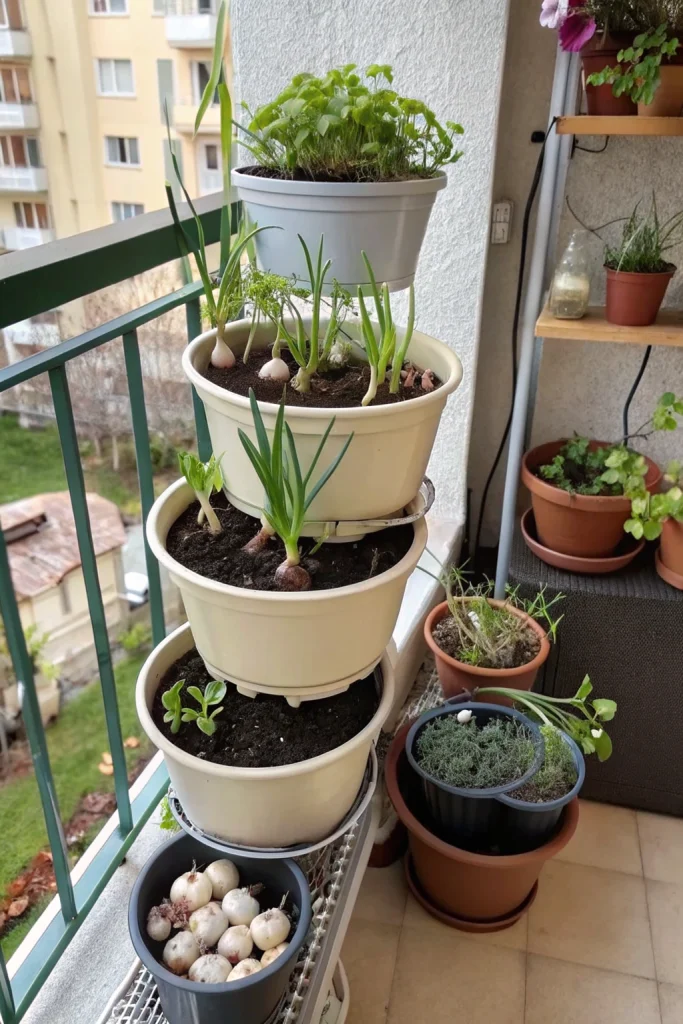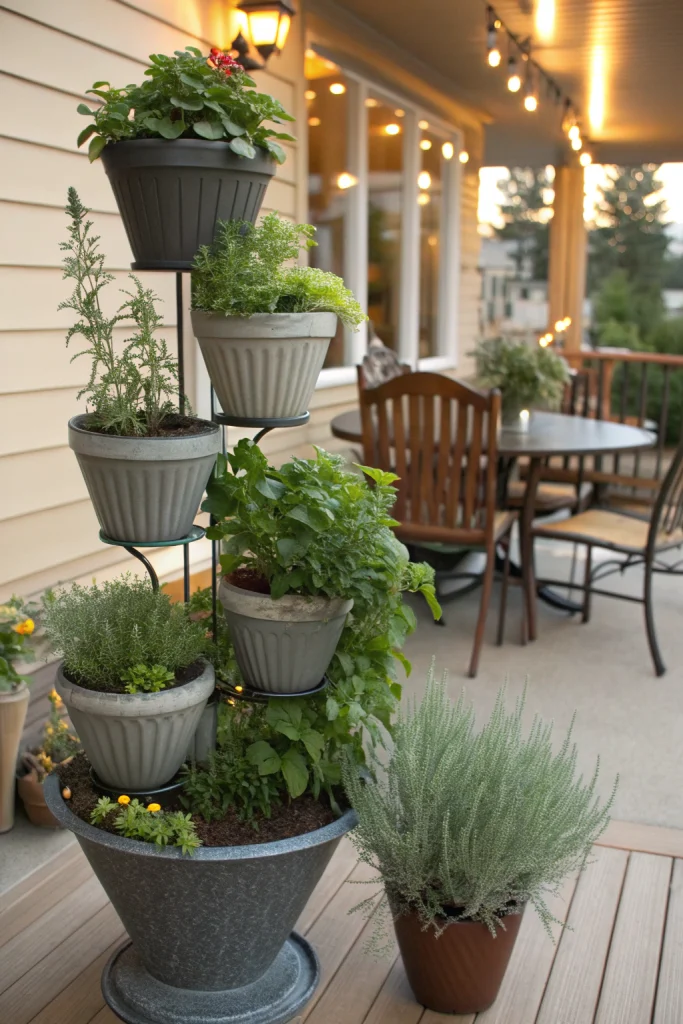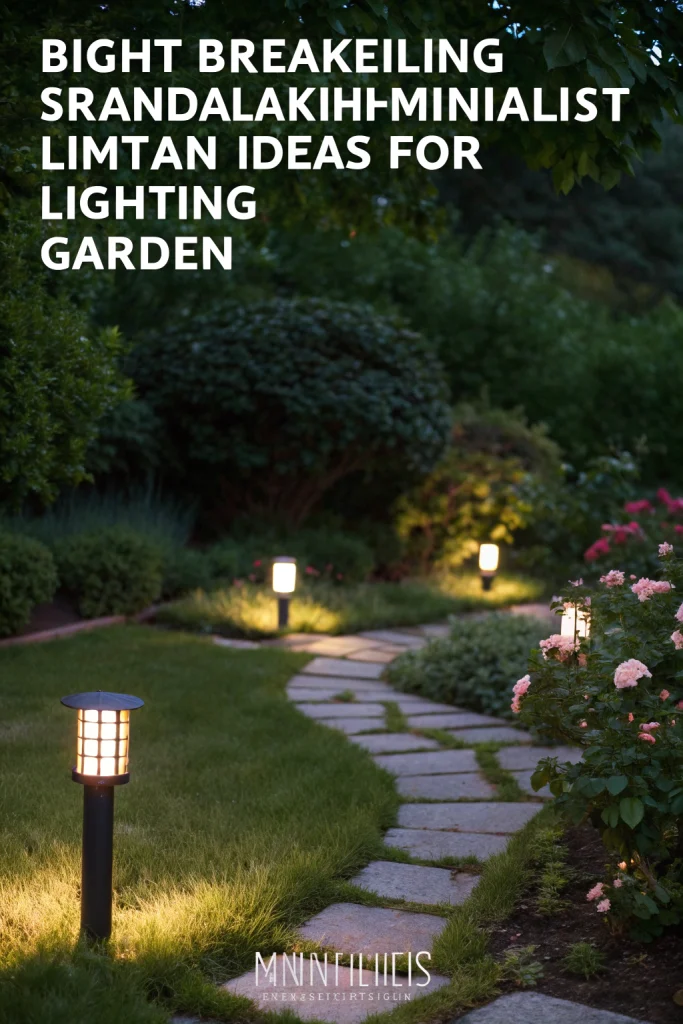Table of Contents
ToggleBalcony, Garlic, Buckets, for — Sustainable Gardening Wisdom for Year-Round Abundance
Balcony, Garlic, Buckets, for blends practical, low-cost techniques with real environmental impact. Use these eco-first methods to reduce waste, save water, build living soil, and support pollinators—all while keeping your garden beautiful and productive through the cold season.
[lwptoc]
Why Balcony, Garlic, Buckets, for Matters This Season
Winter prep is when smart gardeners get ahead: leaves become mulch, rain becomes irrigation, and “waste” becomes soil food. With Balcony, Garlic, Buckets, for, you set resilient foundations now—so spring growth is faster, healthier, and cheaper. This proactive approach not only saves you time and resources in the long run but also significantly enhances the ecological footprint of your gardening efforts. By embracing these principles, you transition from merely growing plants to actively fostering a vibrant, sustainable ecosystem right in your backyard or on your balcony.
Core Materials & Tools for Your Sustainable Garden
Adopting the Balcony, Garlic, Buckets, for philosophy means rethinking what you need for gardening. The emphasis shifts from expensive retail products to readily available, often free, and eco-friendly materials. Your toolset should reflect efficiency and durability, focusing on items that aid in natural processes rather than overriding them.
- Dry leaves, shredded cardboard, twig cuttings: These are the superstars of your mulch and sheet-mulch layers. They suppress weeds, retain moisture, and slowly decompose, feeding your soil. Collecting them now saves valuable time and improves soil structure dramatically for spring.
- Compost setup: Whether a simple bin, a compact bokashi system for kitchen scraps, or a worm tower perfect for containers, composting is central to creating nutrient-rich soil. It diverts organic waste from landfills and provides a steady supply of free, super-charged fertilizer.
- Rain barrel with downspout diverter; watering can or soaker hose: Water conservation is paramount. A rain barrel collects precious, chlorine-free water, reducing your reliance on treated tap water. A watering can offers precise application, while a soaker hose provides efficient, deep watering without much evaporation loss.
- Reusable pots (terracotta/metal/wood) and sturdy seed trays: Ditch flimsy plastic. Investing in durable, reusable pots and trays reduces plastic waste. Terracotta breathes, metal is sturdy, and wood offers natural insulation, each contributing to better plant health and less environmental impact.
- Hand tools (stainless trowel, pruners, rake) and a simple sieve: Quality over quantity. Stainless steel tools resist rust and last longer. A good pair of pruners ensures clean cuts, promoting plant health. A rake helps gather leaves effortlessly, and a sieve is invaluable for preparing fine seed-starting mix from your homemade leaf mould or compost.
These core materials and tools are not just functional; they are foundational to building a gardening practice that respects nature’s cycles and conserves resources. By selecting wisely, you’re not just buying equipment; you’re investing in the longevity and sustainability of your garden.
Step-by-Step Method: Building Your Sustainable Garden with Balcony, Garlic, Buckets, for
The journey to a sustainable garden is built on a series of intentional, eco-friendly actions. This step-by-step guide details how to implement the principles of Balcony, Garlic, Buckets, for, ensuring robust growth and environmental stewardship.
Step 1 — Build a No-Dig Base with Leaves for Balcony, Garlic, Buckets, for
The no-dig method is revolutionary for soil health and weed suppression. It mimics natural forest floors, building soil fertility from the top down. This is especially effective when preparing beds for garlic and other fall plantings.
Start by laying cardboard directly on bare soil. Ensure the cardboard is free of tape and excessive printing. Overlap edges by 10–15 cm to prevent weeds from sneaking through. Wet the cardboard lightly; this helps it settle and begin to break down, inviting beneficial microbes. Immediately after, add a generous layer—5–10 cm—of shredded leaves. These leaves are a goldmine of organic matter, providing essential carbon and housing a myriad of microorganisms. Finish with a thin layer of compost. This final layer introduces stable nutrients and microbial diversity, kickstarting the decomposition process and buffering moisture. This robust no-dig base suppresses weeds effectively, buffers soil moisture fluctuations, and jumpstarts the fungal networks crucial for healthy soil structure, preparing an ideal environment for your spring plantings.
Step 2 — Capture Rain & Water Smarter to Support Balcony, Garlic, Buckets, for
Water is a precious resource, and efficient management is a cornerstone of sustainable gardening. Implementing smart water capture and usage strategies reduces your utility bills and minimizes your ecological footprint, which is vital for any Balcony, Garlic, Buckets, for setup.
Install a rain barrel. Placing it under a gutter with a downspout diverter allows you to collect gallons of natural, soft rainwater that plants love. Rainwater is free of chlorine and other chemicals found in tap water, making it gentler on your plants and the soil microbiome. Make it a habit to water early in the morning. This reduces evaporation significantly compared to midday watering, allowing plants to absorb moisture before the sun’s heat accelerates loss. For containers and balconies, group pots by their water needs. Placing thirsty plants together and drought-tolerant ones separately allows for targeted watering, preventing over or under-watering. Additionally, mulch containers with leaves. This simple act drastically reduces surface evaporation from pots. Finally, add saucers with gravel beneath your potted plants. The gravel keeps the pot slightly elevated, preventing root rot, while the saucer catches excess water, which can then slowly evaporate, creating a mini-humid environment around the plant and further reducing water loss.
Step 3 — Feed Soil Life Naturally for Robust Balcony, Garlic, Buckets, for Growth
Healthy soil is the foundation of a healthy garden. The Balcony, Garlic, Buckets, for approach champions natural soil enrichment over synthetic inputs, fostering a vibrant underground ecosystem essential for plant vitality.
Start a cold compost pile, especially if you have a surplus of fallen leaves and kitchen scraps like coffee grounds. Cold composting is less intensive than hot composting but equally effective over time, slowly breaking down organic matter into rich, dark humus. For indoor or smaller spaces, consider using bokashi. This fermentation method rapidly processes kitchen waste into a pre-compost material that can then be trenched directly into resting garden beds or mixed into outdoor compost. By burying bokashi-treated waste, you introduce beneficial microbes and nutrients directly into the root zone, significantly improving soil structure and fertility. Another invaluable habit is to sieve last year’s leaf mould. Leaf mould, made from decomposed leaves, is an excellent soil conditioner, light in nutrients but superb for improving soil texture and water retention. Sifting it creates a silky, fine medium perfect for crafting your own seed-starting mix for early sowings. This homemade mix provides a sterile, nutrient-rich, and lightweight environment ideal for delicate seedlings, giving them the best possible start without relying on store-bought, peat-based alternatives.
Step 4 — Balance Pests with Habitat in Your Balcony, Garlic, Buckets, for Garden
An eco-first garden embraces biodiversity, seeing pests not as enemies to be eradicated, but as part of a larger ecosystem that needs balance. The Balcony, Garlic, Buckets, for method encourages creating habitats that support natural predators and beneficial insects, reducing the need for chemical interventions.
Instead of tidying up every last seed head, keep select seed heads on your plants through winter. These provide a vital food source for winter birds, who, in turn, help control insect populations. Bundle hollow stems, such as those from sunflowers or perennial grasses, into a habitat corner with sticks and leaves. These bundles provide shelter for beneficial insects like solitary bees, ladybugs, and lacewings, which are natural predators of common garden pests. Only resort to mild soap, neem oil, or garlic sprays when absolutely necessary and as a last resort. Broad-spectrum pesticides, even organic ones, can harm beneficial insects as well as pests. The first line of defense should always be prevention and promoting natural balance. Practice companion planting where possible. Certain plants deter pests or attract beneficial insects. For example, planting garlic near roses can help repel aphids, a classic example of how plant synergy supports a healthier garden without chemicals.
Environmental & Cost Impact of Balcony, Garlic, Buckets, for
The beauty of the Balcony, Garlic, Buckets, for approach lies not only in its effectiveness but also in its profound positive impact on both the environment and your wallet. By adopting these methods, you transition from a consumer-driven gardening model to a resource-generating one, where waste is a resource and efficiency is key.
One of the most significant environmental impacts is waste diversion. With a focus on leaves and organic materials, you can divert many bags of leaves from landfill each year. Instead of becoming methane-producing waste, these leaves transform into nutrient-rich mulch and compost, cycling valuable organic matter back into your garden. This alone greatly reduces landfill burden and greenhouse gas emissions associated with waste decomposition. Furthermore, implementing rain capture strategies and effective mulching drastically cuts irrigation needs. By collecting rainwater and reducing evaporation, you conserve municipal water supplies and lower your water bill. A garden mulched with leaves needs significantly less watering than a bare soil garden, especially during dry spells. Moreover, the creation of simple habitat zones—like leaving seed heads or bundling hollow stems—directly increases garden biodiversity. These zones provide food and shelter for pollinators, beneficial insects, and birds, fostering a healthier, more resilient local ecosystem. This enhanced biodiversity contributes to natural pest control and improved pollination, leading to healthier plants and better yields. From a cost perspective, these methods are largely free or very low cost. Leaves are free, cardboard is often free, and homemade compost costs nothing but time and willingness to process kitchen scraps. This stands in stark contrast to buying bags of mulch, synthetic fertilizers, potting mixes, and pesticides. Over time, the savings are substantial, making high-yield, eco-conscious gardening accessible to everyone, regardless of budget.
Advanced Eco Hacks for Your Balcony, Garlic, Buckets, for Garden
Once you’ve mastered the basics of Balcony, Garlic, Buckets, for, you can explore more advanced techniques to further enhance your garden’s sustainability and productivity. These hacks are designed to fine-tune your approach, bringing even greater efficiency and ecological benefit.
- Charge homemade biochar in compost tea before mixing into beds: Biochar is highly porous carbon that improves soil structure, water retention, and nutrient availability. “Charging” it by soaking in nutrient-rich compost tea fills its pores with beneficial microbes and nutrients, making it even more effective when incorporated into your soil for long-term fertility.
- Swap plastic seed trays for soil blocks: Soil blocks are self-contained cubes of growing medium that eliminate the need for plastic trays, reducing single-use plastic waste. They promote strong root development by air-pruning roots as they reach the edge of the block, leading to healthier, less-stressed transplants.
- Try milk-jug winter sowing for hardy perennials and salad greens: This ingenious method uses repurposed translucent milk jugs as miniature greenhouses. Sow seeds in them during late winter, and nature’s freeze-thaw cycles provide optimal stratification and germination. It’s perfect for hardy perennials, many herbs, and cold-tolerant salad greens like lettuce and spinach, yielding robust seedlings without artificial lights.
- Insulate patio pots with cardboard jackets and leaf fill to protect roots: For container gardens, especially in colder climates, protecting roots from extreme temperature fluctuations is crucial. Wrap large pots with cardboard jackets, and then fill the space between the pot and the jacket with dry leaves. This natural insulation keeps soil temperatures more stable, preventing freezing and thawing cycles that can damage roots, especially for sensitive plants. This is particularly useful for growing garlic in colder regions.
These advanced hacks demonstrate that sustainable gardening is an ongoing learning process, with always something new to implement for greater efficiency and environmental benefit. They deepen your connection to natural processes and turn your garden into an even more resilient and productive space.
Design & Aesthetics (Keep It Beautiful) with Balcony, Garlic, Buckets, for
Sustainable gardening doesn’t mean sacrificing beauty. In fact, the principles of Balcony, Garlic, Buckets, for often lead to a more organic, harmonious aesthetic. Integrating eco-friendly practices can create a garden that is not only productive but also visually appealing and deeply calming.
Blend sustainability with style: Think about how materials can serve multiple purposes. Recycled-wood edges for raised beds or borders offer a rustic charm while defining spaces. Mossy planters, perhaps those salvaged terracotta ones, develop a beautiful patina over time, adding character and a sense of age. Warm solar path lighting not only guides your way but also creates a cozy, inviting ambiance in the evening, emitting a soft glow without consuming electricity. For a minimalist or Nordic feel, choose a restrained palette for your hardscaping and plant choices. Focus on natural tones—greens, earthy browns, and muted grays. Repeat textures, such as the roughness of bark, the smoothness of stones, or the delicate fronds of ferns, to create visual interest and cohesion. Consider plants with strong structural forms that look good even in dormancy, providing year-round appeal. By intentionally designing with these elements in mind, your garden becomes a sanctuary that celebrates nature’s beauty and your commitment to sustainability. Even a simple balcony garden can be transformed into a tranquil oasis with thoughtfully chosen pots, vertical planting structures, and carefully selected plants that thrive in limited spaces, contributing to the overall aesthetic of Balcony, Garlic, Buckets, for.
Common Mistakes to Avoid in Your Balcony, Garlic, Buckets, for Journey
Even with the best intentions, new sustainable gardeners can make common mistakes that hinder progress. Understanding these pitfalls can help you navigate your Balcony, Garlic, Buckets, for journey more smoothly and efficiently, ensuring better outcomes for your plants and the environment.
- Using peat moss (unsustainable—choose leaf mould instead): Peat bogs are vital carbon sinks and unique ecosystems. Harvesting peat moss is a destructive practice that releases significant amounts of CO2. Instead, opt for readily available, homemade leaf mould, which provides similar benefits for soil structure and moisture retention without the environmental cost, aligning perfectly with the ethos of Balcony, Garlic, Buckets, for.
- Over-tidying (remove hazards, keep habitat zones for allies): The urge to make a garden look “neat” can be counterproductive to ecological health. While sharp edges or fallen branches that pose a hazard should be removed, leaving areas of wildness—piles of leaves, bundles of hollow stems, spent flower stalks—provides crucial habitat for beneficial insects, pollinators, and small wildlife, which are your garden’s allies in pest control and pollination.
- Watering at midday (evaporation losses; water early/late): Watering when the sun is at its peak leads to significant water loss through evaporation before the plants can absorb it. The most efficient times to water are early morning or late evening, when temperatures are cooler and winds are calmer, allowing the water to penetrate the soil and reach the roots effectively.
- Heavy fertilizing in cold soils (feed microbes, not just plants): In cold soil, microbial activity slows down dramatically. Applying strong synthetic fertilizers in these conditions can lead to nutrient runoff and waste, as plants cannot efficiently take up nutrients. Focus instead on feeding the soil microbes with organic matter like compost and leaf mould. These microbes will then make nutrients available to plants as temperatures rise, creating a balanced and naturally fertile environment.
By avoiding these common errors, you can maximize your efforts and accelerate the transition to a truly sustainable and thriving garden.
Storage & Winter Care for Your Balcony, Garlic, Buckets, for System
Winter isn’t a time for your sustainable garden to go dormant in terms of preparation. The off-season is crucial for organizing, maintaining, and preparing for the vigorous growth of spring. Proper storage and winter care routines extend the life of your tools, preserve valuable resources, and set the stage for a seamless transition into the next growing season under the principles of Balcony, Garlic, Buckets, for.
Cover rain barrels: Once freezing temperatures arrive, drain your rain barrel and cover it. This prevents the collected water from freezing and potentially cracking the barrel. It also keeps out debris, ensuring your barrel is clean and ready to collect fresh rainwater come spring. Aerate compost: Continue to turn your compost pile periodically, even in colder weather. While decomposition slows, aeration prevents compaction and anaerobic conditions, maintaining a healthy environment for your compost microbes. If you have a closed bin, ensure good air circulation. Label leaf-mould pens by date: If you’re accumulating leaf mould in dedicated cages or piles, label them with the date of collection. This helps you keep track of which batch is fully decomposed and ready to use, typically 1–2 years for rich, dark leaf mould. Oil cleaned tools: After meticulously cleaning all soil and debris from your metal tools—trowels, pruners, shovels, and rakes—dry them thoroughly. Then, apply a thin coat of linseed oil or another rust-preventative oil to the metal surfaces. This prevents rust, keeps moving parts functional, and significantly extends the lifespan of your valuable tools. Store dry cardboard flat for quick sheet-mulch builds when beds become free: Cardboard is a critical component of no-dig gardening and sheet mulching. Collect and store it flat and dry over winter. This way, you’ll have a readily available supply for expanding beds, suppressing weeds, or starting new garden areas as soon as space becomes available in late winter or early spring. This foresight saves you time and effort when you’re eager to get spring planting underway. Additionally, if you’re growing garlic in buckets, ensure these are either well-insulated or moved to a sheltered spot to prevent excessive freezing and thawing, which can damage the developing cloves.
Conclusion
Balcony, Garlic, Buckets, for proves greener gardening is easier, cheaper, and more resilient. By embracing the simple, yet profound, changes outlined—focusing on maximizing natural inputs like leaves and rainwater, fostering vibrant soil life, and creating habitats for beneficial creatures—you’re not just growing plants; you’re cultivating a thriving, self-sustaining ecosystem. Start with leaves, water capture, soil life, and habitat—your spring garden will repay you with vigor and fewer inputs, embodying the true spirit of ecological abundance. This holistic approach reduces your environmental footprint, enhances biodiversity, and connects you more deeply with the natural cycles of growth and renewal, transforming your gardening experience into one of true sustainability and joy.
FAQ
- Can I start now with Balcony, Garlic, Buckets, for? Yes—definitely! The cold season is an ideal time to lay the groundwork for a successful sustainable garden. Focus on collecting and storing leaves for mulch and leaf mould, installing your rain capture system, beginning your no-dig bed preparations, and properly caring for your tools. These preparatory steps are crucial for making spring planting much easier and more productive.
- Only a balcony? Can Balcony, Garlic, Buckets, for still apply? Absolutely! Balcony gardening is perfectly suited for these principles. Use worm towers or bokashi systems for composting kitchen scraps directly in larger containers. Insulate pots with cardboard jackets and packed leaves to protect roots from temperature extremes. Vertical gardening systems can maximize your limited space, and collecting rainwater from a small roof overhang or even through a tarp can provide ample water for your containers. Garlic can be successfully grown in containers, too, following these insulation tips.
- Special tools required for Balcony, Garlic, Buckets, for? No, not at all. The beauty of this approach is its simplicity and accessibility. A basic set of garden tools—a reliable rake for gathering leaves, sturdy pruners for cutting and tidying, and a basic compost bin (which can even be a simple wire mesh structure or sturdy bags)—is all you truly need to get started. Focus on multi-purpose, durable tools rather than specialized gadgets.
- Science behind this Balcony, Garlic, Buckets, for approach? Yes, these methods are rooted in well-established ecological and horticultural science. No-dig gardening respects soil structure and fungal networks; mulching reduces evaporation and feeds soil microbes; rain harvesting conserves water; and habitat creation promotes biodiversity and natural pest control. These practices are aligned with principles of regenerative agriculture and permaculture, aiming to work with nature rather than against it. See the linked resources below for more in-depth scientific backing and broader context on sustainable practices.
- Healthline — Growing food in limited space
- Harvard T.H. Chan — Plate & Planet (sustainability)
- Medical News Today — Health benefits of gardening




